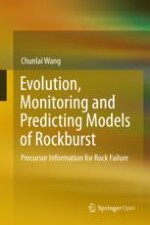2.1 Experimental Materials
2.2 Experimental Equipments
2.2.1 Laboratory Equipments
2.2.2 Field Equipment
2.3 SEM and EDS
Chemical elements | Percentage of weight | Percentage of atoms | Chemical formulas |
|---|---|---|---|
C | 16.86 | 26.07 | CaCO3
|
O | 45.84 | 53.22 | SiO2
|
Al | 2.59 | 1.78 | Al2O3
|
Si | 14.67 | 9.70 | SiO2
|
S | 1.50 | 0.87 | FeS2
|
K | 0.68 | 0.32 | |
Ca | 15.99 | 7.41 | |
Fe | 1.87 | 0.62 | Fe |
Chemical elements | Percentage of weight | Percentage of atoms | Chemical formulas |
|---|---|---|---|
C K | 83.76 | 87.68 | CaCO3
|
O K | 14.95 | 11.75 | SiO2
|
Si K | 1.28 | 0.57 | SiO2
|
